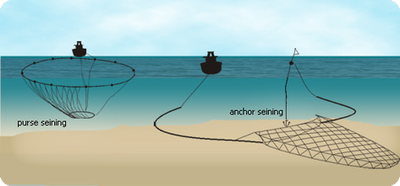
View all banners
FAFB will never call you and ask for your credit card details over the phone. If this happens, hang up!

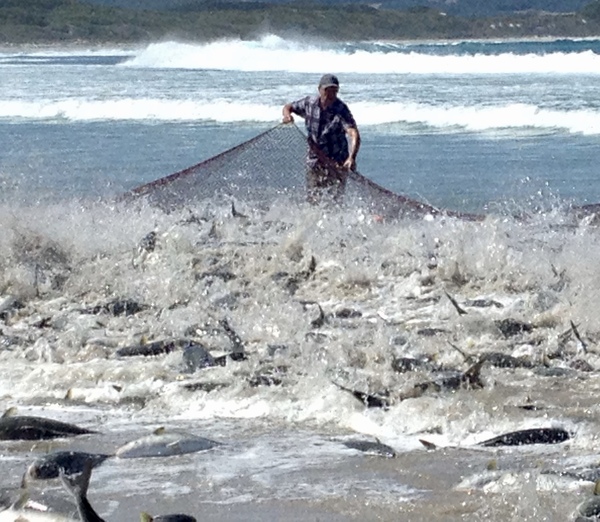
Drone footage of the salmon on Parry beach2020
Seine fishing is a method of catching fish using a net that is hung vertically from a rope and used to haul catch from the water. The top is usually buoyed using floats with the bottom edge being weighted down.
There are several methods of seine fishing, including:
• Beach seine • Danish seine • Scottish seine • Purse seine • Ring net
Each method is a variation on the basic principle and has developed over time in different regions depending on the target species, technology and local environmental factors.
The use of seine fishing dates back to our Paleolithic ancestors and has been observed throughout the history of fishing across the continents. From ancient Greeks to Native American Indians, Egyptians to the Maori variations of this method have all been documented.
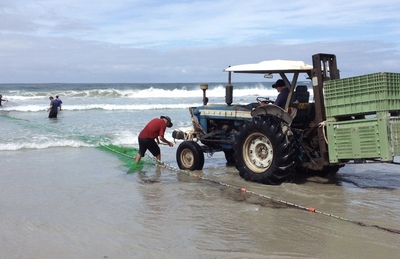

Likely to have been the first form of seine net fishing this method involves a net being launched from the shore using a small fishing boat or, in shallow water, by hand. One end of the net is dragged out to sea in a semi-circle before returning to the shore. With the two ends of the net now joined on land, the net is then hauled back to the shore and the catch removed. Still common in small fisheries around the world to catch small pelagic species that shoal close to the shore this method used to be a regular practice in UK estuaries for targeting specific species such as sea trout or migrating salmon. Whilst no longer a common practice, there are a handful of locations in Scotland that still use this method and can be seen in England by fishermen collecting bait such as sand eels.
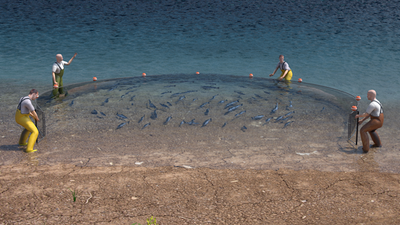
The Danish seine (so called because it is thought to have originated in Denmark in the early 19th century) is similar to a small trawl net without the otter boards and with longer wire warps. The net is conical in its form and has two long wings from which drag lines are attached which can collect the fish as the vessel surrounds an area. The seiner vessel drags the net around the target area and the warps herd the fish towards the centre of the net and the ‘catch-bag’.
This form of fishing works best for demersal species located on flat but rough areas of the seabed that are not suitable for trawling.
The net is shot from the seiner and marked with a dan buoy; a drag line is then swept in a big circle (along with a net wing, followed by the seine bag and remaining wing) until the second drag line is deployed. Once the two ends are together, forming a circle, the drag lines are hauled in using coiling machines so that the catch can be harvested.
A purse seine net is used to encircle a shoal of fish at sea forming a deep curtain of netting which is suspended vertically through the water. The net is initially shot with an open bottom; however, as its name suggests, the bottom edge of the net is fitted with rings through which a strong steel cable is threaded. When the net is hauled to the surface, the cable tightens up and closes the space at the bottom forming a bowl-like purse in which the fish are contained.
The skill in purse seining is to locate a suitable shoal of the target fish in which to deploy the net. Most skippers use a combination of GPS, echo sounders and sonar to determine the best location to shoot the seine.
Once a suitable shoal has been targeted the vessel begins by launching one of the net with a dhan on it and shoot the net around the shoal by circling the fish in the one vessel or by using a smaller skiff to tow the net around. Once they have returned to the original position, the dhan is collected along with the first end of the net and both ends are slowly drawn together to tighten the purse and haul the catch out of the water.
Once the net is above the surface of the sea and suspended alongside the boat the catch is taken on board the vessel either by way of a brail (similar to an anglers landing net) or (more commonly in larger boats and specifically for small pelagics like mackerel and herring) using fish pumps.
Purse seine nets in industrial UK fishing can be as large as 700m long and 200m deep and are capable of encircling a region of 250m in diameter.
Because purse seining only targets species of fish that congregate in the pelagic zone of the sea it is considered a relatively eco-friendly method of fishing as there is no impact on the ocean floor and, because the fishing gear is not towed through the water, fuel consumption is quite low relative to other methods.
Economic regulatory and environmental drivers have seen a large change in the numbers of vessels in the UK switching from trawling to purse seining to target mackerel and herring for instance.
As with trawling there are instances of by-catch being problematic particularly with larger predatory species such as sharks that are drawn to the large shoals which are often manipulated by fisheries using FAD’s (fish aggregation devices).
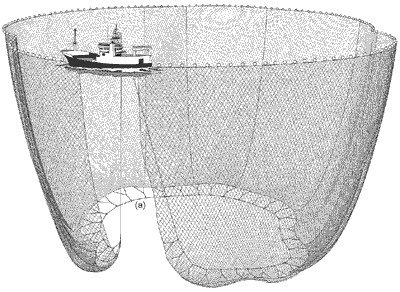
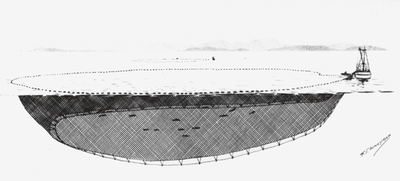
Similar to a purse seine the ring net was used in many European fisheries prior to the more wide-spread adoption of the former. Smaller and lighter than the purse seine, traditional ring nets differ insomuch that the footrope running through the bottom of the netting was fixed and may not be ‘pursed’ in the same way. Instead the ring net has a bunt section in the centre of the net and is hauled from both sides at the same time.
There are three main types of seine nets; beach seine, anchor seine and Scottish seine.
A variation on both Danish and anchor seine netting, Scottish seine fishing developed over the 19th and 20th century and is very specific to the Scottish fishing industry. It requires a great deal of skill and knowledge of local tidal streams, grounds and the behaviour of the fish being caught as the shooting and hauling speed plays an all-important role.
A Scottish seine net has up to a dozen coils of rope on either side with each side being shot away from the vessel before being drawn together for hauling. Once the two ends of the net are attached to the winch, the vessel will move forwards and ‘tow’ the gear until the ropes take up the strain. At this point the winch begins to slowly haul the nets whilst the vessel continues to move ahead slowly. As the gear closes around the catch, the vessel will collect speed until the nets can be hauled to the stern and emptied on board (or via reception hopper). The process from shooting the nets to hauling can take up to three hours.
